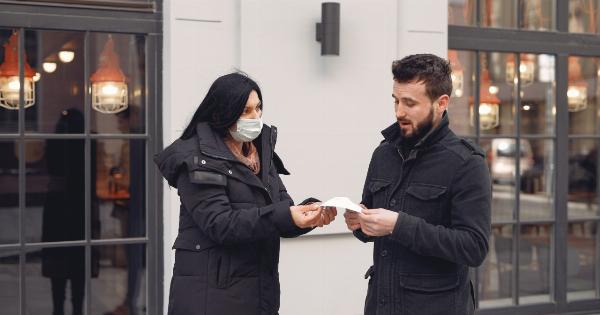Cold and flu are common viral infections that affect the respiratory tract, causing symptoms like coughing, runny nose, sore throat, and fever.
These illnesses are highly contagious and can spread easily from person to person through respiratory droplets, contact with contaminated surfaces or objects, or even by touching an infected person.
What is the contagious period?
The contagious period for cold and flu can begin as early as a day before symptoms appear and can last up to a week or more after the onset of symptoms.
This means that even if you feel fine, you may still be contagious and able to spread the virus to others.
How is cold and flu spread?
Cold and flu viruses can spread in several ways, including:.
- Airborne transmission – when someone with an infection coughs or sneezes, they release respiratory droplets into the air that can be inhaled by others.
- Contact transmission – when someone touches an infected person or object, they may pick up the virus and then spread it by touching their own mouth, nose, or eyes.
- Direct transmission – when someone comes into close contact with an infected person, such as hugging or kissing.
Preventing the spread of cold and flu
The following measures can help prevent the spread of cold and flu:.
- Wash your hands frequently with soap and water for at least 20 seconds, especially after coughing, sneezing, blowing your nose, or coming into contact with an infected person or object.
- Avoid touching your face, especially your eyes, nose, and mouth, as this can transfer the virus from your hands into your body.
- Cover your mouth and nose with a tissue or your elbow when coughing or sneezing, and dispose of tissues properly.
- Avoid close contact with sick people, and stay home if you are sick to avoid spreading the virus to others.
- Clean and disinfect frequently touched surfaces and objects, such as doorknobs, countertops, phones, and keyboards.
- Get vaccinated against the flu every year to protect yourself and others.
When is it safe to return to work or school?
If you have cold or flu symptoms, it is best to stay home and rest until you feel better.
The general rule of thumb is to wait at least 24 hours after your fever has broken (without the use of fever-reducing medication) before returning to work or school to ensure that you are no longer contagious.
When should I see a doctor?
If your symptoms are severe or do not improve after a few days, it may be time to see a doctor.
This is especially important if you are at a higher risk of developing complications from the flu, such as young children, older adults, pregnant women, or people with certain medical conditions like asthma or diabetes.
Conclusion
Cold and flu are contagious infections that can spread quickly from person to person through respiratory droplets, contact with contaminated surfaces or objects, or even by touching an infected person.
To prevent the spread of these illnesses, it is important to practice good hygiene, avoid close contact with sick people, and stay home if you are sick. If you are experiencing severe symptoms or are at a higher risk of developing complications, it may be best to see a doctor. By taking these precautions, you can help protect yourself and others from the spread of cold and flu.




























